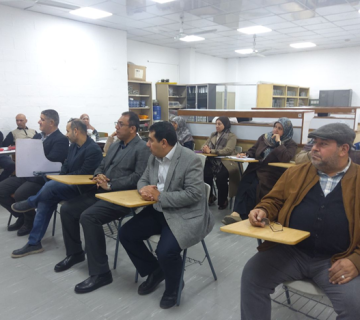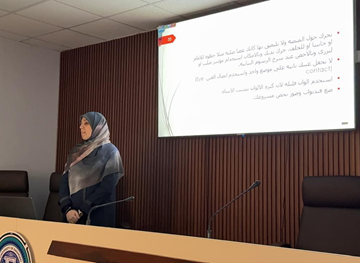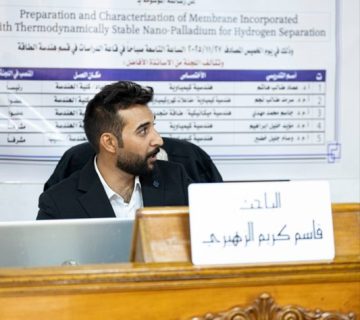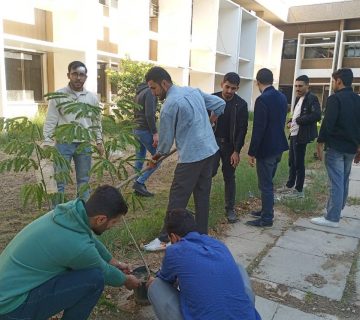The College of Engineering at the University of Baghdad witnessed the public discussion of master’s student Marwa Muhammad Obaid from the Department of Electrical Engineering whose thesis was entitled “Intelligent Computing Techniques for Network Intrusion Detection” on Monday, 15th July 2024, in the discussion room in the Department of Electrical Engineering. The discussion committee was composed of:
| Position status in the committee | Specialty | Name |
| Chairperson | Electrical Engineering /Control and Computer Engineering | Prof. Dr. Ibraheem Kasim Ibraheem |
| Member | Electrical Engineering / Communications and Information Engineering | Prof.Dr. Dheya Jassem Kazem |
| Member | Electrical Engineering/Computer Engineering | Assist. Prof. Dr. Mahmood Zaki Abdullah |
| Supervisor | Computer Engineering/Computer Engineering and Information Technology | Assit. Prof. Muna Hadi Saleh |
The research included an intrusion detection system (IDS), as this system has become necessary to secure networks and information from malicious attacks and hackers. In recent years, these systems have evolved significantly thanks to modern technologies such as machine learning (ML) and deep learning (DL). The development of modern intrusion detection systems relies on the use of ML algorithms to analyze large amounts of data and identify anomalous patterns that may indicate the presence of an intrusion. DL can process complex data and extract important features, providing higher accuracy in detecting attacks.
This thesis, used four ML algorithms Naive Bayes (NB), K-Nearest Neighbor (KNN), Adaboost (ADA), Decision Tree (DT), and a Hybrid Deep Learning Intrusion Detection System (HDL-IDS) system for network intrusion detection using a One-Dimensional Convolutional Neural Network (1DCNN) on the UNSW-NB15 dataset and the NLS-KDD dataset. To reduce irrelevant features, three feature selection methods: Analysis of Variance (ANOVA), Mutual Information (MI), and Chi-Square (Ch-2) were used.
The findings from the comparison of the ML algorithms and hybrid deep learning model, using two approaches feature selection and without feature selection, indicate that the HDL-IDS system demonstrates the best performance in terms of accuracy. The accuracy result without feature selection is 99.99 %, precision 0.9999, recall 0.4540, and F1-measure 0.6245 with a time of 67 sec, while with feature selection when using ANOVA and MI, the accuracy is 100%, precision 1.00, recall 0.454, and F1-measure 0.624 with a time of 5sec on binary classification of UNSW-NB15 dataset.
According to the performance metrics and experimental results on multiple classifications on the NSL-KDD dataset, it indicates that the HDL-IDS system shows the best performance in terms of accuracy when compared with the proposed ML algorithms, where the HDL-IDS system achieved an accuracy of 99.99%, precision 0.9999, recall 0.9909. F-measure 0.9909, with a time of 120 sec without feature selection, while with feature selection when using ANOVA achieved an accuracy of 99.89%, precision of 99.15, recall of 0.9915, and F-measure of 0.9916, with a time of 68 sec due to the imbalance in the distribution of categories in the dataset.
After scientific discussion by the members of the discussion committee, listening to the researcher’s defense, and evaluating the thesis, the researcher was awarded a master’s degree in electrical engineering.








